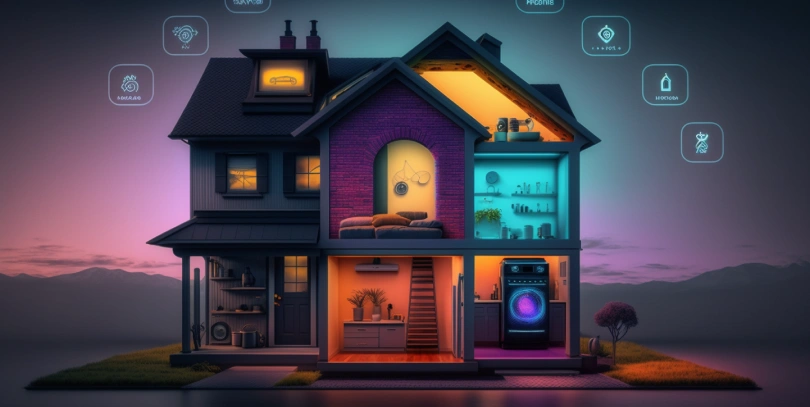Smart home devices are rapidly gaining popularity as homeowners seek to automate and streamline their living spaces. These devices offer a wide range of benefits, from increased security to energy efficiency, and can be controlled from anywhere using a smartphone or other mobile device. Here are 30 facts about smart home devices you might find interesting.
- Smart home devices can include everything from smart thermostats and lighting to security cameras and voice assistants like Amazon Alexa or Google Assistant.
- The global market for smart home devices is expected to reach over $158 billion by 2024, with North America being the largest market.
- The most popular smart home device is the smart speaker, with over 28% of households owning at least one.
- Smart home devices can be controlled remotely using a mobile app, or through voice commands with a voice assistant.
- Many smart home devices are designed to learn and adapt to user behavior, making them more intuitive over time.
- Smart home devices can help you save money on energy bills by optimizing temperature and lighting settings based on your preferences and habits.
- Smart thermostats like Nest and Ecobee can be programmed to turn off heating and cooling when no one is home, and can learn your schedule to keep your home comfortable while minimizing energy use.
- Smart lighting can be controlled remotely, with features like dimming and color-changing options to create the perfect ambiance for any occasion.
- Smart locks can provide increased security by allowing you to lock and unlock your doors remotely, and even send alerts when someone enters or exits your home.
- Smart home devices can be integrated with other smart devices, creating a fully automated home ecosystem that can be controlled from a single device or app.
- Smart home devices are compatible with a wide range of smart home platforms, including Apple HomeKit, Amazon Alexa, and Google Home.
- Many smart home devices are designed to be easy to install and set up, with user-friendly interfaces and step-by-step instructions.
- Smart home devices can be used to monitor your home while you’re away, with features like security cameras and motion sensors that can send alerts to your phone.
- Some smart home devices can even detect and respond to emergencies, like smoke or carbon monoxide alarms that send alerts and shut off appliances if necessary.
- The market for smart home devices is constantly evolving, with new products and features being developed all the time to make our homes more connected and efficient.
- Smart home devices are not only limited to the inside of the home. There are also smart devices for outdoor spaces, like smart sprinkler systems, outdoor lighting, and even smart pool equipment.
- The popularity of smart home devices is driven by their convenience and ease of use, with many devices offering simple, one-touch controls or voice-activated commands.
- Smart home devices can help you keep track of your daily routine, with features like reminders for appointments or medication, and even the ability to order groceries or other supplies online.
- Many smart home devices are designed to work together seamlessly, creating a unified system that can be customized to meet your specific needs.
- Smart home devices can be used to enhance home entertainment, with smart TVs, sound systems, and streaming devices that offer easy access to your favorite shows and movies.
- Some smart home devices can even help you save time on chores, with robotic vacuums and other cleaning tools that can be programmed to do the work for you.
- Smart home devices can provide peace of mind when you’re away from home, with features like remote monitoring and the ability to receive alerts if anything unusual happens.
- Smart home devices can also help you maintain a healthier lifestyle, with features like fitness tracking and meal planning that can help you stay on track with your health goals.
- Many smart home devices are designed with accessibility in mind, making it easier for people with disabilities or mobility issues to control their home environment.
- Smart home devices are becoming increasingly affordable, with many entry-level devices available for less than $50.
- Smart home devices can also help you reduce your carbon footprint, with features like energy-efficient lighting and appliances that can help you save money on your utility bills while reducing your environmental impact.
- Smart home devices can provide a level of convenience and control that was once only possible in science fiction movies, making it easier than ever to manage your home and your life.
- Smart home devices are evolving at a rapid pace, with new products and features being developed all the time, offering even more ways to improve your home and your daily routine.
- Many smart home devices are designed to be compatible with multiple platforms, giving users greater flexibility and choice when it comes to managing their devices.
- As smart home devices become more widespread, there is a growing focus on ensuring they are secure and protected against hacking and other security threats, making them a safe and reliable option for homeowners.






